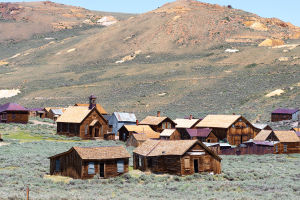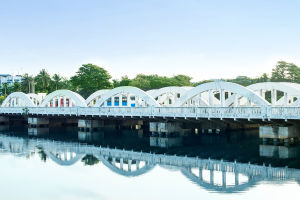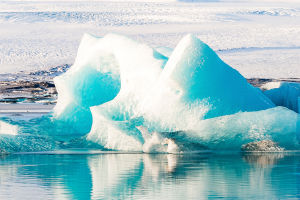Ama Dablam, with an elevation of 6,828 meters, is one of Nepal's most recognized peaks. Located in the Khumbu Valley, just 12 kilometers from Mount Everest, it’s often called the “Mother’s Necklace” due to its distinctive shape.
Despite not being the tallest peak in the Himalayas, Ama Dablam is frequently described as one of the most beautiful and iconic mountains in the region. For those ready to take on the challenge, the journey to Ama Dablam is a remarkable experience.
Best Time to Visit
The best time to trek to Ama Dablam is during the two main trekking seasons in Nepal: spring (March to May) and autumn (September to November). These seasons offer the best weather conditions, with clear skies and moderate temperatures, making it ideal for trekking.
Winter and monsoon seasons should be avoided due to heavy snowfall and rain, which make climbing dangerous and visibility poor. The trekking season can get busy, especially in autumn, so be prepared for crowds in popular areas.
How to Get There
Reaching Ama Dablam requires a journey to the Khumbu region, and the most common starting point is Kathmandu. From Kathmandu, trekkers usually take a 35-minute flight to Lukla, which is one of the most thrilling airport landings in the world. From Lukla, the trek to Ama Dablam Base Camp takes about 10-12 days, depending on your pace and acclimatization needs.
You will trek through Sherpa villages such as Phakding, Namche Bazaar, Tengboche, and Dingboche before reaching the Base Camp. You can hire guides and porters locally to assist with the trek, which will also help with carrying gear. Local trekking companies provide packages for guided tours, which typically include permits, guides, meals, and accommodations.
Permits and Costs
For trekkers heading to Ama Dablam, you will need several permits to access the trekking route. The most important permits are:
1. Sagarmatha National Park Permit: This is required to trek in the Khumbu region, and it costs around NPR 3,000 (approximately $25 USD).
2. Trekkers' Information Management System (TIMS) Card: This costs around NPR 2,000 (approximately $18 USD).
3. Ama Dablam Climbing Permit: If you're planning to summit, you need a climbing permit. The fee for non-South Asian climbers is around NPR 10,000 (approximately $85 USD), while for South Asians, the fee is lower.
The total cost for the trek, including permits, food, and lodging, can vary but generally ranges from $1,500 to $3,000 USD for a guided trek.
Climbing and Trekking Routes
To get to Ama Dablam Base Camp, the trek follows a popular route that is well-marked. Here’s a detailed breakdown:
1. Base Camp (4,600 meters): Base Camp is a scenic and relatively accessible area. This is where you will begin your climb, and it's typically reached after trekking through villages such as Namche Bazaar. The journey usually takes 5-7 days.
2. Advanced Base Camp (ABC, 5,400 meters): This is reached by yaks carrying supplies, saving you time and energy. The trek here takes about 2-3 hours from Base Camp.
3. Camp 1 (C1, 5,800 meters): Located on a rocky ledge, this camp is used as a rest point before tackling the steeper climbing sections. The trek to C1 from ABC takes about 1.5 hours.
4. Camp 2 (C2, 6,000 meters): The main climbing begins after C1. You will need to traverse tough granite sections, and this part is considered the most challenging. Camp 2 is located on a large, yellow rock platform with beautiful views.
5. Camp 3 (C3, 6,300 meters): From here, climbers move into mixed ice and snow terrain. The Mushroom Ridge is a key landmark in this section.
6. Summit Push: The final push to the summit takes about two hours from Camp 3. This section involves navigating a ridge and a steep ice face. Once at the top, the summit offers panoramic views of surrounding peaks, including Everest.
Accommodations and Food
Along the trek, accommodations are typically in tea houses, which are simple guesthouses run by locals. They provide basic amenities, including a bed and meals. Expect to pay around NPR 500-800 (approximately $4-7 USD) per night for lodging. Meals in tea houses usually cost around NPR 500-800 for breakfast or lunch, with dinner options costing between NPR 800-1,500.
You will find a variety of food along the route, ranging from local dishes like dal bhat (lentil soup and rice) to Western options like pasta, pizza, and sandwiches. The further you go, the more limited the food options may become.
Safety and Tips for the Trek
1. Acclimatization: One of the most important aspects of this trek is acclimatization. Don’t rush your ascent and take proper rest days, especially in Namche Bazaar and Dingboche, to help your body adjust to the higher altitudes.
2. Fitness: The trek to Ama Dablam Base Camp and the summit requires a high level of physical fitness. Make sure to train well before your trek and practice trekking at high altitudes.
3. Weather: Be prepared for cold weather, especially above 5,000 meters. Even during the trekking seasons, it’s advisable to pack warm clothing, including gloves, hats, and jackets.
4. Guides and Porters: Hiring a guide and porter can make your trek much more enjoyable. A guide can help navigate the trail and provide important cultural and safety information, while a porter can carry your gear.
5. Emergency Evacuation: Make sure you have insurance that covers emergency evacuation, as high-altitude rescues can be costly.
Final Thoughts
Ama Dablam presents an extraordinary adventure for those looking to immerse themselves in Nepal's stunning landscapes and test their limits in the Himalayas. Whether you're a seasoned mountaineer or simply trekking to Base Camp, this iconic peak is a must-see. We hope this guide will help you plan your own adventure, and we’re confident the experiences will stay with you forever. Get ready, Lykkers, for an unforgettable journey!
Climbing Ama Dablam in One Minute
video by Pema Travels


